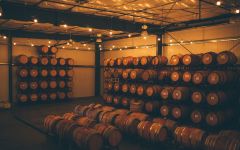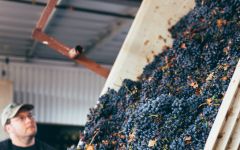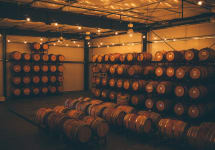Andis Amador County Zinfandel 2016



Product Details
Your Rating
Somm Note
Winemaker Notes
This Amador Zinfandel is sourced from the diverse blocks of their Estate Vineyard located in the Shenandoah Valley of Amador County. We bring together two of Amador’s traditional grape varieties to compose a wine very similar to what was likely being produced here in the late 1800’s. Dried berries boysenberry, and blackberry fruit flavors are allowed nicely with hints of coffee, toffee, and licorice.
A tasty wine with any fare. Try it with hearty soups, spaghetti, and almost any kind of aged cheese.
Blend: 95% Zinfandel, 5% Barbera
Other Vintages
2015-
Wine
Enthusiast
-
Wine
Enthusiast





Opened in November of 2010, Andis Wines brings a modern and fresh approach to Amador County's winemaking region. Their focus: seeking out the best vineyards in the Sierra Foothills to craft delicious wines with balance, character, complexity and varietal correctness. Andis' winemaking team, Mark Fowler and consulting winemakers, Philippe Melka & Maayan Koschitzky, bring a fresh, modern approach to Sierra Foothills AVA, using both traditional and innovative winemaking approaches, which have garnered 90+ point scores in Wine Spectator and Wine Enthusiast, glowing reviews in print and online media, and placements in some of the finest restaurants nationwide.
The winery building is a state-of-the-art winemaking facility built with a "green" design. The spacious tasting room offers panoramic vineyard views of the surrounding Amador wine country, expansive picnic area and a bocce ball court.

Unapologetically bold, spice-driven and jammy, Zinfandel has secured its title as the darling of California vintners by adapting well to the state's diverse microclimates and landscapes. Born in Croatia, it later made its way to southern Italy where it was named Primitivo. Fortunately, the imperial nursery of Vienna catalogued specimens of the vine, and it later made its way to New England in 1829. Parading the true American spirit, Zinfandel found a new home in California during the Gold Rush of 1849. Somm Secret—California's ancient vines of Zinfandel are those that survived the neglect of Prohibition; today these vines produce the most concentrated, ethereal and complex examples.

As the lower part of the greater Sierra Foothills appellation, Amador is roughly a plateau whose vineyards grow at 1,200 to 2,000 feet in elevation. It is 100 miles east of both San Francisco and Napa Valley. Most of its wineries are in the oak-studded rolling hillsides of Shenandoah Valley or east in Fiddletown, where elevations are slightly higher.
The Sierra Foothills growing area was among the largest wine producers in the state during the gold rush of the late 1800s. The local wine industry enjoyed great success until just after the turn of the century when fortune-seekers moved elsewhere and its population diminished. With Prohibition, winemaking was totally abandoned, along with its vineyards. But some of these, especially Zinfandel, still remain and are the treasure chest of the Sierra Foothills as we know them.
Most Amador vines are planted in volcanic soils derived primarily from sandy clay loam and decomposed granite. Summer days are hot but nighttime temperatures typically drop 30 degrees and the humidity is low, making this an ideal environment for grape growing. Because there is adequate rain throughout the year and even snow in the winter, dry farming is possible.
